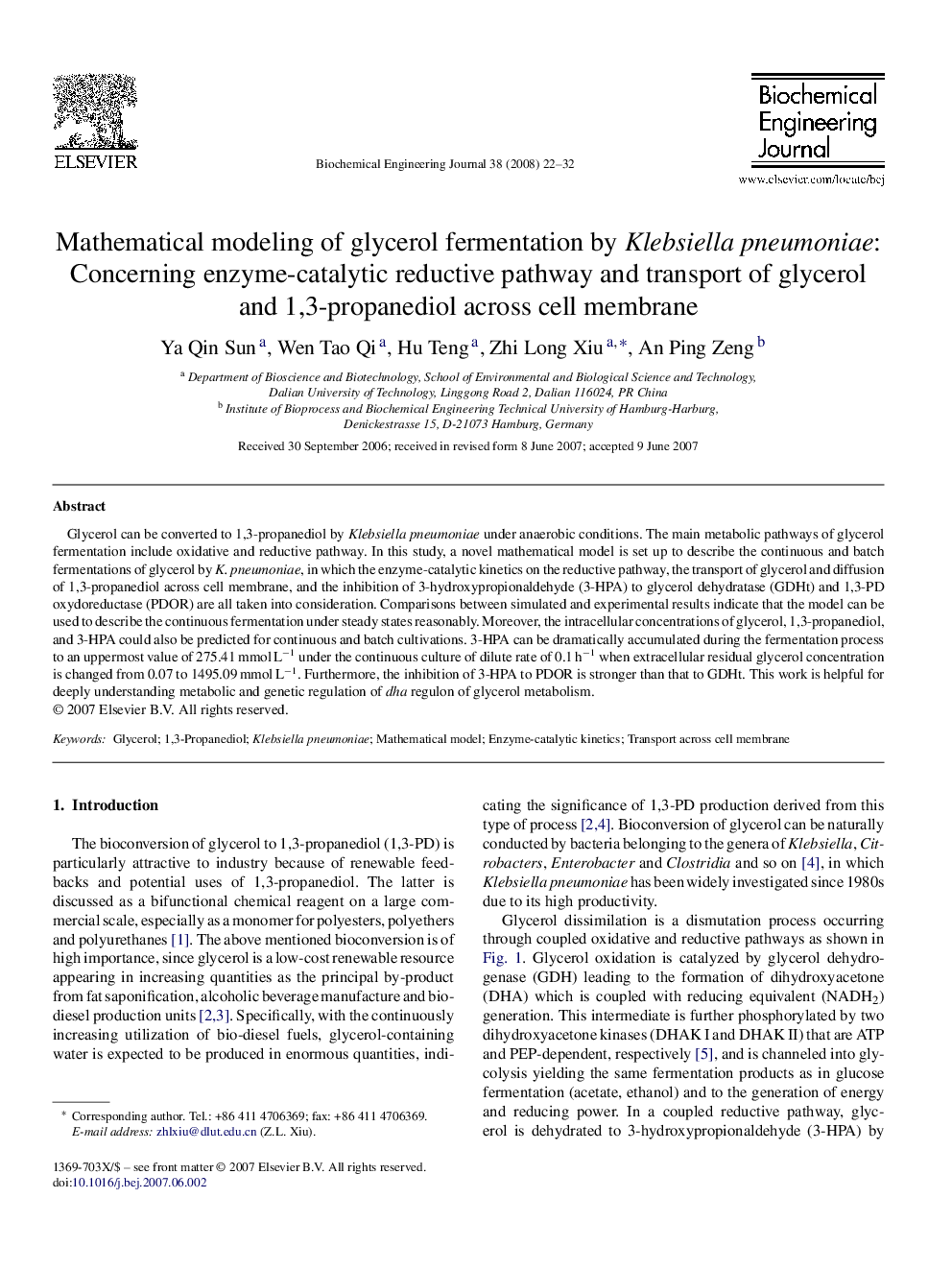| Article ID | Journal | Published Year | Pages | File Type |
|---|---|---|---|---|
| 4737 | Biochemical Engineering Journal | 2008 | 11 Pages |
Glycerol can be converted to 1,3-propanediol by Klebsiella pneumoniae under anaerobic conditions. The main metabolic pathways of glycerol fermentation include oxidative and reductive pathway. In this study, a novel mathematical model is set up to describe the continuous and batch fermentations of glycerol by K. pneumoniae, in which the enzyme-catalytic kinetics on the reductive pathway, the transport of glycerol and diffusion of 1,3-propanediol across cell membrane, and the inhibition of 3-hydroxypropionaldehyde (3-HPA) to glycerol dehydratase (GDHt) and 1,3-PD oxydoreductase (PDOR) are all taken into consideration. Comparisons between simulated and experimental results indicate that the model can be used to describe the continuous fermentation under steady states reasonably. Moreover, the intracellular concentrations of glycerol, 1,3-propanediol, and 3-HPA could also be predicted for continuous and batch cultivations. 3-HPA can be dramatically accumulated during the fermentation process to an uppermost value of 275.41 mmol L−1 under the continuous culture of dilute rate of 0.1 h−1 when extracellular residual glycerol concentration is changed from 0.07 to 1495.09 mmol L−1. Furthermore, the inhibition of 3-HPA to PDOR is stronger than that to GDHt. This work is helpful for deeply understanding metabolic and genetic regulation of dha regulon of glycerol metabolism.
